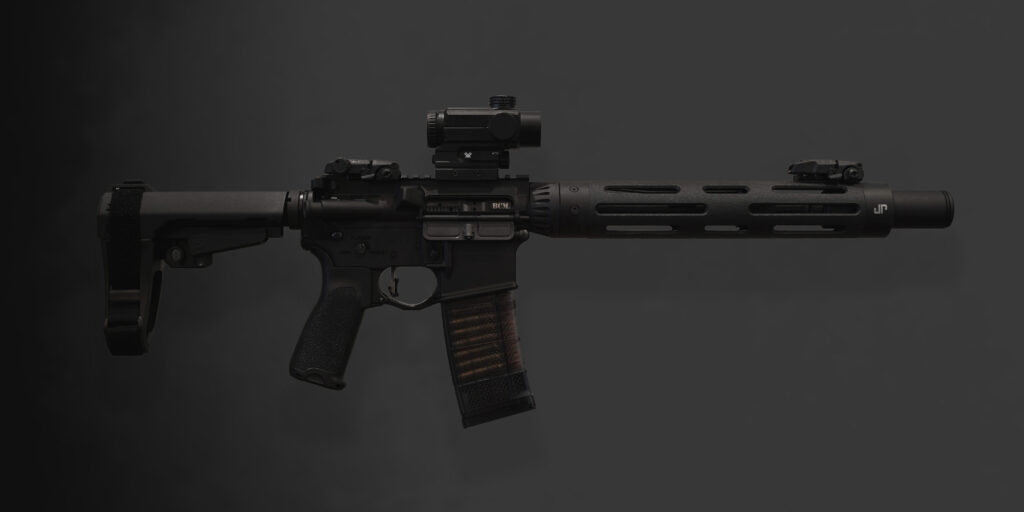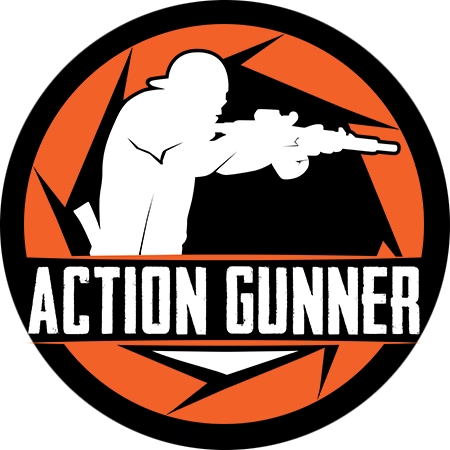When it comes to choosing the ideal rifle for The Tactical Games, competitive shooters often find themselves on a journey of continuous improvement. As a member of Team JP, I’ve experienced firsthand the evolution of my rifle setup for this demanding sport. In this article, we’ll explore the process of creating the perfect rifle for The Tactical Games, from initial setups to the final, optimized configuration.
The Quest for the Perfect Rifle for The Tactical Games
Starting Point: 2019 and The Tactical Games Debut
My journey to find the ultimate rifle for The Tactical Games began in 2019 when the event first caught my attention. The initial rules were straightforward: use a mostly factory-setup tactical rifle. I started with a JP-15 equipped with a PSC-11 side charge upper, which included:
- 16-inch competition profile barrel
- Tunable gas block
- JP thermal dissipator
- Silent capture spring
- JP fire control group
- Non-magnified optic and backup irons
- Full mass carrier
While this setup performed well, I quickly realized that The Tactical Games presented unique challenges compared to traditional three-gun competitions. The weight of the rifle became a crucial factor due to extended carrying times during events.
Second Iteration: Weight Reduction and Suppressor Experiment

To address the weight issue and improve performance, I made significant changes to my rifle for The Tactical Games:
- Transitioned to a 10.5-inch barrel
- Added a suppressor to reduce muzzle rise and improve target feedback
- Once the suppressor was pinned, I switched to a collapsible stock and a Vortex Razor 1-6.
This configuration worked well for the predominantly short-range engagements (within 100 yards) on steel targets. However, the suppressor introduced new challenges, such as heat build-up leading to mirage distortion and occasional burns.
Back to Basics: Focusing on Efficiency
Learning from previous iterations, I returned to the JP-15 platform but with crucial modifications to create a more efficient rifle for The Tactical Games:
- 14.5-inch ultra-light barrel
- Newer JP M-lock handguard for both weight savings and reduction in diameter for navigating smaller barricade ports
- With low power variable optic (LPVO) being allowed in the rulebook as of 2020, it made sense to move to a 1-10 for better clarity at long range.
This setup proved versatile, accurate, and efficient. However, I found it slightly too light for my preferred recoil handling – especially forward of the receiver set with the ultralight barrel.
The Final Configuration: The Ultimate Rifle for The Tactical Games
Collaborating with Team JP, we developed what I consider the perfect rifle for The Tactical Games, striking an ideal balance between weight and performance:
- 13.5-inch light contour barrel (this has just enough heft to balance the rifle out)
- Pinned flash hider (total length 16 inches)
- Low mass operating system with JP silent captured spring
- Flat face JP trigger
- Magpul K2 grip for optimal handling
- Traditional rifle stock for improved shoulder contact and cheek weld
- Vortex 1-10 scope for versatility and clarity
Conclusion: Lessons Learned in Building the Perfect Rifle for The Tactical Games
After experimenting with multiple configurations, I’ve arrived at a rifle setup that I’m confident will excel in The Tactical Games. For those looking to build their own rifle for The Tactical Games, consider these key takeaways:
- Prioritize weight reduction without sacrificing performance
- Balance is crucial – find the sweet spot between light weight and manageable recoil
- Optics matter – a quality LPVO can make a significant difference in versatility
- Don’t be afraid to experiment and evolve your setup based on competition experiences, but starting with a solid receiver set, performance barrel and matched bolt is ideal.
Remember, the perfect rifle for The Tactical Games may vary depending on individual preferences and shooting styles. Use this evolution as a guide, but don’t hesitate to make adjustments that work best for you.
Have you competed in The Tactical Games or are you considering it? Share your experiences or questions about rifle setups in the comments below. I’ll be testing this final configuration in upcoming matches and look forward to sharing the results. See you at the range!

